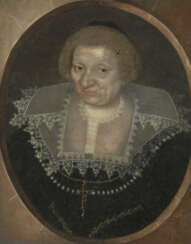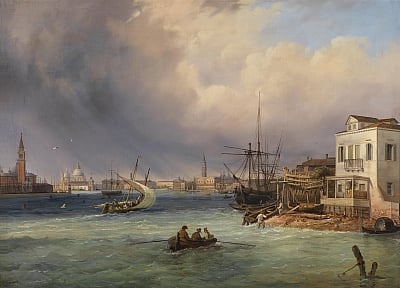
International Paintings — A166-3: Gemälde, Weine, Whisky und Spirituosen

Ascanio Luciano or Ascanio Luciani was an Italian architectural painter who was active during the Baroque period. He is known for his architectural paintings, capricci, compositions with figures among ruins, and some vedute. He worked in Naples throughout his career. He is regarded as playing an important a hinge role in the genre of architectural capricci between leading founders of the genre such as Viviano Codazzi and François de Nomé and the 18th-century specialists of the genre.

Thomas Hendricksz de Keyser was a Dutch portrait painter, a dealer in Belgium bluestone and stone mason. He was the most in-demand portrait painter in the Netherlands until the 1630s, when Rembrandt van Rijn eclipsed him in popularity. Rembrandt was influenced by his work, and many of de Keyser's paintings were later falsely attributed to Rembrandt.

Frans Geffels, known in Italy as Francesco Geffels (25 August 1624 – 18 February 1694) was a Flemish painter, printmaker, architect, stage designer and designer of ephemeral structures for solemn and festive occasions. After training in his native Antwerp, he was mainly active in Mantua, where he was prefetto delle fabbriche to the Duke, a role that gave him the direction of the artistic and construction activities undertaken by the Ducal court. He worked also on projects for the local aristocratic class of Mantua. In addition, he completed projects for the Liechtenstein princes and for the imperial court in Vienna.
He was both a canvas and fresco painter. He created portraits, history subjects, military scenes, architectural scenes and genre art, in particular merry companies. Geffels is mainly remembered as the designer of some of the key examples of Baroque architecture in Mantua.

Thomas Heeremans was a Dutch painter and art dealer. He is known for his landscapes of winter scenes, cityscapes, harbor scenes, beach views, river views and village scenes. He was influenced by Klaes Molenaer, a slightly older painter also from Haarlem.

Balthasar Denner was a German painter, highly regarded as a portraitist. He painted mostly half-length and head-and-shoulders portraits and a few group portraits of families in interiors. Usually Denner concentrated on the face; clothes and paraphernalia were done by other painters or later his daughter. His chief peculiarity consisted in the fineness of his mechanical finish, which extended to depicting even the almost invisible furze of hair growing on smooth skin. He is particularly noted for his heads of old men and women.

Godfried Schalcken was a Dutch genre and portrait painter. He was noted for his mastery in reproducing the effect of candlelight, and painted in the exquisite and highly polished manner of the Leiden fijnschilders.

Jules Louis Dupré was a French painter, one of the chief members of the Barbizon school of landscape painters. If Corot stands for the lyric and Rousseau for the epic aspect of the poetry of nature, Dupré is the exponent of its tragic and dramatic aspects.

Émile Pierre Joseph de Cauwer was a painter of architectural subjects. He was a pupil of his father, Joseph de Cauwer. He painted careful, detailed studies of buildings, amongst them the Church of St. Martin at Oudenarde, the Town Hall at Oudenarde, and the New Synagogue at Berlin.

Jules Louis Dupré was a French painter, one of the chief members of the Barbizon school of landscape painters. If Corot stands for the lyric and Rousseau for the epic aspect of the poetry of nature, Dupré is the exponent of its tragic and dramatic aspects.





































































